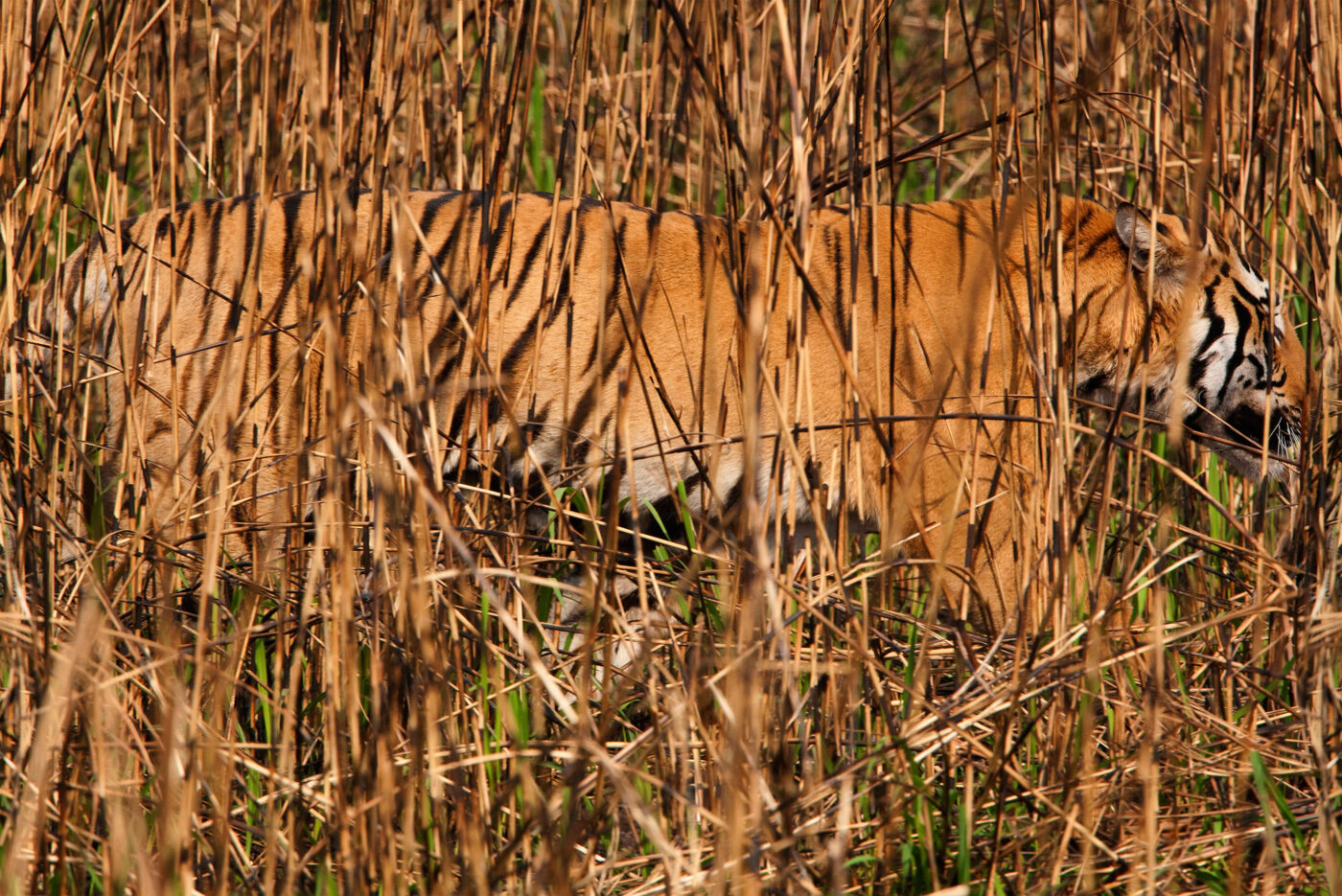“This photo was taken on assignment for National Geographic in the Kaziranga National Park in Assam, northeastern India. It was the most dangerous place I have ever worked in my life because I was on the ground with tigers moving freely about in grasses up to ten meters high.
One day, I was riding on an elephant with an anti-poaching patrol when a rhino attacked us. The rhino bit the elephant’s trunk and chased us for 500 meters. I had a bamboo pole with a camera attached to it and was trying to get a picture of the rhino jumping up at the guard to attack him. Seeing a 5,000-pound animal jumping up to attack someone on the back of an elephant was absolutely incredible. I ended up flying off the top of the elephant, but my fingertips just managed to grab hold of the seat—or I would have been a dead man.
I saw this tiger lying in the road. For the next two hours, it attempted to go into an elephant herd to grab a baby elephant. The matriarch of the herd charged him every time he attacked and, after two hours, he finally got tired and walked off through the burnt grass. This photo, where he exactly fills the frame, was the last one I shot before he disappeared.
It shows the majesty of the tiger and how incredible our natural world is. The burnt grass comes from lightning and fire, and this is why the tiger has its stripes. Tigers evolved to look like this so the deer that they hunt will not see them. Because of that camouflage, the tiger became the king of the jungle.”
Location: Kaziranga National Park, India
Photograph Date: 2008
Medium: Chromogenic Print
Edition: 200



